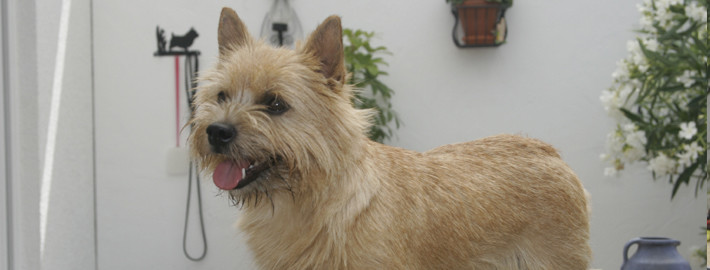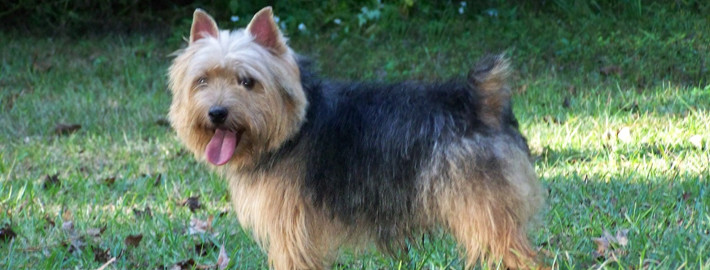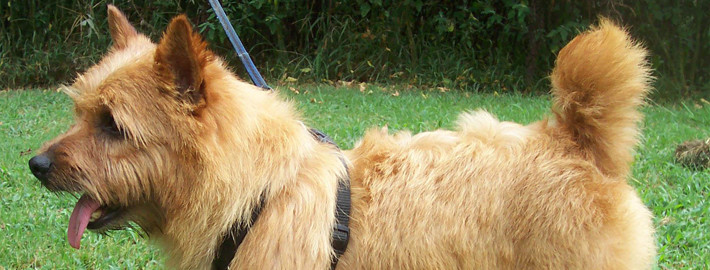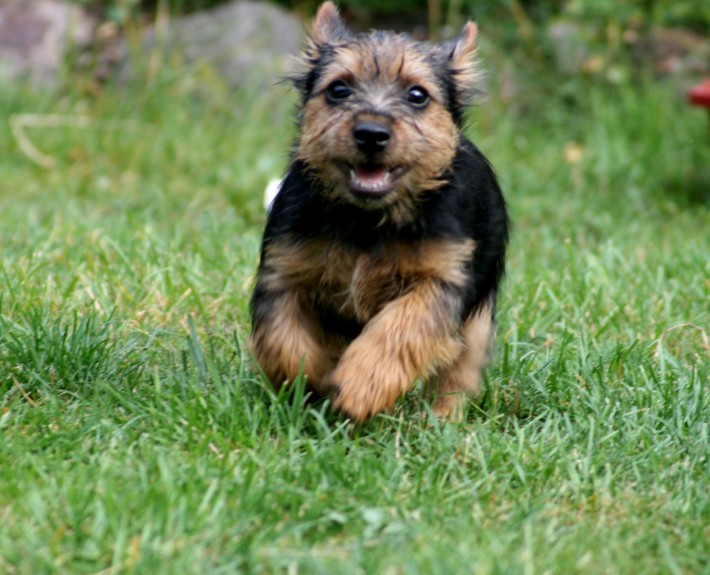What makes the Norwich Terrier Unique?
The spirited and fearless Norwich Terrier is the perfect companion for families. These loyal dogs are quite adaptable to numerous living situations and they can just as easily make their homes in the countryside as they can in the cities.
Breed Groups
Page Contents
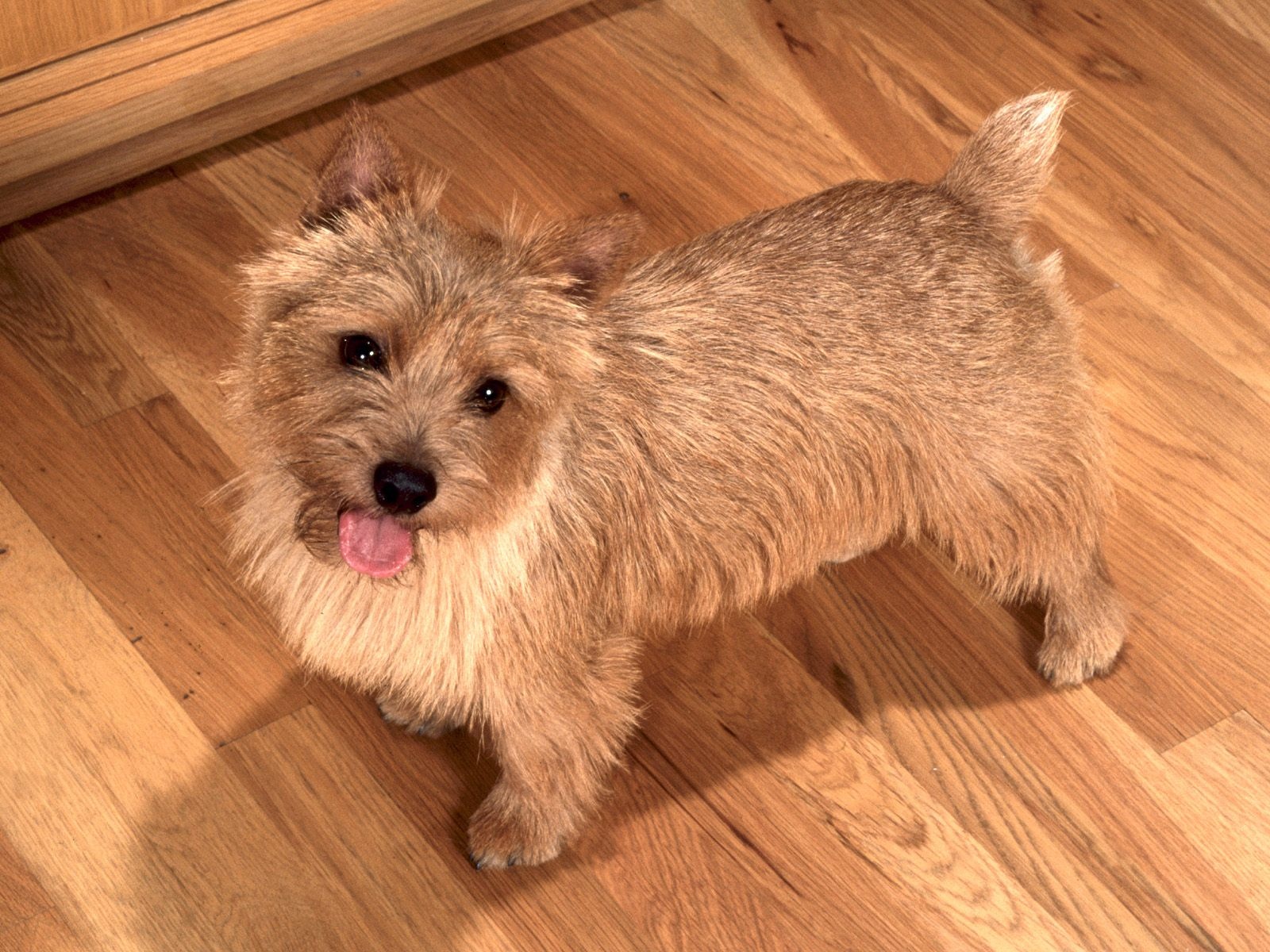
Is the Norwich Terrier Right For You?
Norwich Terriers are always up for an adventure. These mischievous dogs are best suited for owners that have a sense of humor as they are independent minded and playful.
However, terriers tend to be stubborn as a rule and housebreaking may nonetheless prove difficult for some dogs. The best way to prevent accidents is for the dogs to have regular bathroom breaks at the same times every day.
In 5 Words
- Energetic
- Sensitive
- Hardy
- Intelligent
- Affectionate
Characteristics
Learn About the Norwich Terrier
Description
General Description
Norwich Terriers are the smallest breed of working terrier, which gives them an advantage over their competitors when it comes to chasing prey in tight areas. These squarely proportioned dogs also have a robust and solid build. Members of this breed possess triangular muzzles, erect ears, and broad, rounded heads. Their large teeth should meet in a scissors bite. Norwich Terriers have small, dark eyes that generally contain a foxy expression. Short, straight legs and rounded feet are other breed features that allow these dogs to move with a powerful gait. Norwich were bred to have tails that were long enough to be easily grasped in order to pull them out of holes if the occasion arose. These appendages are of medium length and held level with the top line of their backs. In places where the practice is not illegal, Norwich Terriers will have their tails docked by half the full length.
Size
Dogs of both genders should ideally stand 10 inches tall (25.4 centimeters) and weigh approximately 12 pounds (5.4 kilograms).
Coat
These dogs have a wiry double coat that measures 1 to 2 inches (2.5 to 5 centimeters) in length and is thicker on their necks than it is on their bodies. Norwich Terriers come in red, wheaten, black, tan, black and tan, and grizzle colorations. Dark points may also be present. According to American Kennel Club standards, the white markings that some dogs display are not considered to be desirable characteristics in members of this breed.
Short History of the Norwich Terrier
Norwich Terriers date back to the late 1800s when the breed was created in East Anglia, England. It is thought that these dogs owe their existence in part to Cambridge students who owned small rat terriers and often placed bets on the abilities of their own dogs to outdo the competition. While the breed’s original purpose was to catch vermin, these dogs made excellent pets and they were also useful during fox hunts. During their early years, members of this breed went by the name Trumpington Terriers.
The English Kennel Club first recognized the breed in 1932 with the American Kennel Club following suit four years later. From the breed’s earliest appearance, both upright and drop ears have been considered acceptable but controversy soon arose among dog fanciers as to what form these appendages should take. The Kennel Club eventually allowed an official breed split in 1964, with several of the the other dog clubs following suit some 15 years later. Thus, the drop varieties became the Norfolk Terriers and those with upright ears were now known as Norwich Terriers.
Temperament
Norwich Terriers are always up for an adventure. These mischievous dogs are best suited for owners that have a sense of humor as they are independent minded and playful. Members of this breed also like to chase any small animals that cross their path. However, these dogs are very affectionate family pets. Norwich Terriers are good with older children and can handle some roughhousing, but may not be the best choice for households with toddlers. Cats and other canines should get along fine with these dogs, but caution should be exercised around rodents or birds due to Norwich Terriers’ history as a hunting breed. Members of this breed need to be around people and/or other pets in order to be happy and they cannot be left alone for long periods of time. Needless to say, Norwich Terriers do not make good yard dogs so prospective owners should plan accordingly.
Caring for Your Norwich Terrier
General Health
Born in litters of 3 puppies, Norwich Terriers have a typical lifespan of 12 to 15 years. However, owners will need to keep an eye of certain health problems that can arise from time to time. Norwich Terriers are prone to epilepsy, cataracts, hip dysplasia, luxating patellas, and several different kinds of respiratory conditions. Allergic reactions to rabies vaccinations have also been known to occur on occasion.
Care
Daily
Owners should keep in mind that Norwich Terriers were bred to be working dogs and their high energy levels reflect that fact. These little dogs will certainly need regular exercise. A brisk paced daily walk or a short jog two or three times per day is the best way to keep them from becoming them bored and destructive. Dog sports are another good activity for members of this breed. Norwich Terriers will also need to have their fur combed on a daily basis.
Weekly
Pet owners should also brush their dog’s teeth regularly to avoid foul breath and tooth decay.
Monthly
Flea, tick, and heartworm prevention medication is a must for all dogs. Most of these products are typically administered on a monthly basis.
Grooming & Bathing
It may be necessary to brush Norwich Terriers several times per day when they are shedding, but prospective owners should note that these dogs still do not shed heavily. Members of this breed will also need their shaggy coats stripped and trimmed on a regular basis. Their toenails should also be kept clipped in order to keep injuries from occurring. Norwich Terriers only need bathing when they get dirty.
Exercise & Training
Norwich Terriers benefit greatly from early socialization and exposure to a variety of different environments. This will keep the dogs from becoming suspicious of new experiences and strangers later in life. Members of this breed are relatively easy to train, but they require consistent rules and firm handling in order to obtain good results. However, terriers tend to be stubborn as a rule and housebreaking may nonetheless prove difficult for some dogs. The best way to prevent accidents is for the dogs to have regular bathroom breaks at the same times every day. Norwich Terriers also need appropriate amounts of exercise and mental stimulation to prevent them from indulging in undesirable behaviors. Due to the breed’s curious disposition and high prey drive, these dogs will need to be kept on a leash during their outdoor excursions if they are outside of a fenced in area.

